Dentists who use traditional methods to capture patient mouth details cause damage to the soft tissues. Conventional ways also produce poor impressions and unclear images. These problems can lead to mistakes and uncomfortable procedures for patients.
A dental CT scanner solves many of these problems. Unlike regular X-rays, it provides 3D minor detail images that give a much clearer view. It helps dentists see the full picture and make better decisions. So, dentists can make restorations and dental models that enhance patients’ natural appearance.
This article provides a comprehensive guide about how a dental CT scanner works, its application, and its average cost. So, keep reading to explore more.

What is a Dental CT Scanner?
A dental CT scanner is a small device used in dental clinics. Dentists use this CT scanner for dentistry to take detailed 3D pictures of the patient’s mouth. It provides a much clearer image and enables the dentist to see things that are hard to spot with the naked eye.
You can take pictures from different angles and combine them to create a 3D image. The dental X-ray machine consists of several parts. The main components are:
- X-ray tube
- Detector
- Computer system
- Display Or Monitor
All these components work collectively to create 3D dental imaging and plan better treatments.
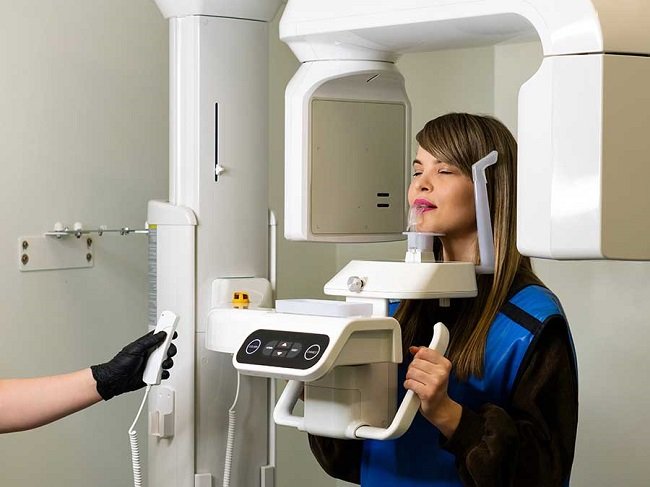
How Does a Dental CT Scanner Work?
Here is the step-by-step guide that helps you understand how a dental CT scanner works to create dental models.
Step 1: Preparation for the Scan
It is important for the dentist or technician to remove any metal object before beginning the scanning. You should also wear protective glasses and an apron to protect the rest of your body. It’s also essential for you to read the instructions to be safe from any glitches.
Step 2: Positioning the Patient
The second step is to prepare your patient. Ask your patient to sit comfortably in a chair and adjust the dental CT scanner around the patient’s head. It’s important to make sure the patient stays in this position during scanning. It prevents the creation of blurry images.
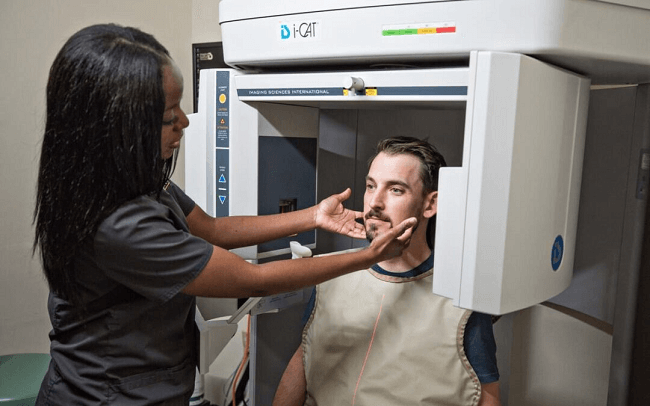
Step 3: Taking the Scan
After you position yourself and your patient, then begin the scanning. You should rotate the scanner around your head. The X-ray tube sends out a beam of X-rays. This radiation passes through your body and is captured by a detector. This process is quick and only takes a few minutes.
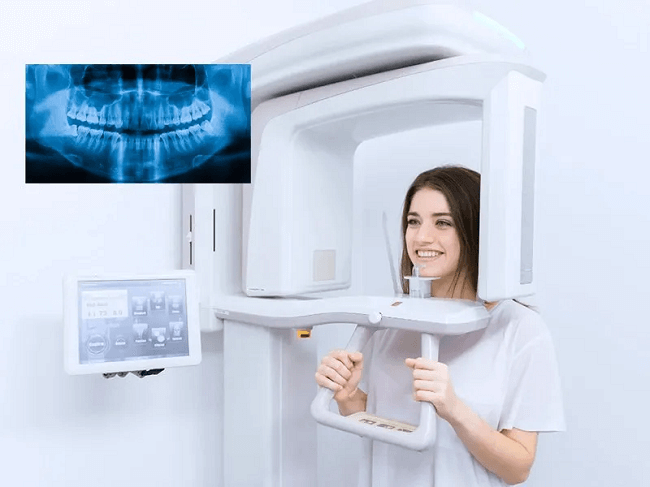
Step 4: Creating the 3D Image
When the detector captures X-ray images, they send these images to the computer. The computer will combine all the images into a single 3D model. This model provides a detailed, clear, and accurate picture of the patient’s mouth. The 3D image is much more detailed than a regular X-ray. This step happens quickly, usually within a few minutes after the scan is completed.
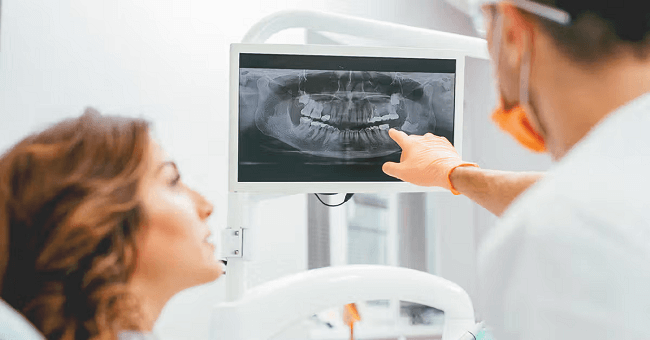
Step 5: Reviewing the Image
After your 3D images are ready, you should examine them on the computer display. You can rotate, zoom in, and focus on different parts of the image. This allows you to detect any problems, such as cavities, infections, bone loss, or structural issues.

Step 6: Sharing the Results
Once you analyze your images, then you will explain the result to your patient. If you find any issues as a dentist, then discuss the possible treatment with your patients. The scanner provides a detailed 3D image. So, you can plan treatments more accurately.
Step 7: Completing the Process
Once you plan or design the treatment for your patient, you may free the patient to leave. If there are any follow-up visits needed, then you will schedule them. The entire process is quick and requires minimal discomfort. You may be asked to have the patient stay for a few extra minutes in case of adjustments.
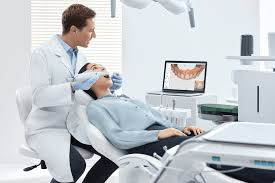
What are the Key Applications of Dental CT Scanners?
After you explore the steps of using scanners, let’s move to the practical application of this dental CT scanner for orthodontics.
– Dental Implant Planning
Implants are used to replace damaged or decayed teeth. Dentists usually use 3D scanners to capture the patient’s mouth condition. So, they plan how many implants are best to cover the damaged area of teeth. Furthermore, dentists also make plans for where to place these implants without damaging surrounding tissues.
– Detection of Dental Issues
Dental CT scanners are used to scan the patient’s mouth and take 3D images of the patient’s jaw, teeth, and bone tissues. In the case of any hidden cavity inside the tooth’s root canal, the scanner captures it precisely. So, the dentist plans better treatment for the patient and enhances the patient’s comfort.
– Surgical Guide Creation
Dental CT Scanners are also used in dental labs to make surgical guides. This guide enables the dentist to avoid any complications during the treatment or model creation. You can use a scanner to design a treatment to improve the patient’s health. Furthermore, you can also use the scanner’s 3D images to make custom-size 3D models.
Advantages of Dental CT Scanners
Here are the perks of using dental CT scanners in dental labs.
– High-Resolution Imaging
With this scanner, you can capture clear pictures of your patient’s teeth and mouth. These images help you see every part of your patient’s teeth, bones, and gums. With sharp images, you can plan surgeries or other treatments.
– Less Radiation Exposure
In traditional methods, you may have more exposure to radiation. However, dental CT scanners enable you to provide an atmosphere where you may face less radiation. This is important because lower radiation keeps you safer. It’s a good balance between safety and accuracy.
– Time-Efficiency and Accuracy
One of the best perks of using this dental X-ray machine is that it saves time for both the patient and the dentist. It captures all the needed images in one quick scan. You don’t have to wait long for the results. It means no more multiple appointments or extra scans.
– Better Treatment Planning
By using a dental CT scanner, you can create the best treatment plan for you. The detailed images show perfectly where any problems are. This helps the dentist choose the best method for fixing it.

What is the Average Cost of Dental CT Scanners?
The cost of dental CT scanners depends on multiple factors. On average, this scanner is available in a range from $50,000 to $100,000. The price depends on the brand, features, and size of the scanner.
Smaller size scanners might cost less. On the other hand, larger-size scanners with advanced features can be more expensive. The software also influences the final cost of dental scanners. Some systems include advanced software for better image analysis, which can raise the price.
Aidite – Cost-Effective Dental Scanner Provider
Aidite is a well-known brand in the dental industry. The brand mainly focuses on dental equipment precision and innovations. They provide high-quality scanners at an affordable price. They offer different types of scanners, like desktop scanners, intraoral scanners, and wireless intraoral scanners.
Furthermore, the Aidite Elegant 3 Intraoral Scanner provides high-resolution scanning ability. You can capture 3D impressions without any errors. Furthermore, the scanner enables you to make 3D models that custom fit into a patient’s mouth. You can make their scanner a valuable investment for your dental lab.

FAQS
What type of CT scan is used in dentistry?
Mostly, dental cone beam computed tomography is the most used scanner in dentistry. This type of scanner is used to produce a three-dimensional image of the patient’s mouth. Furthermore, you can capture the minor detail with great precision.
Can a CT scan show dental problems?
Yes, a CT scan takes an impression of the patient’s mouth. This impression changes into images that capture the minor detail. It enables the dentist to detect any dental problems like tooth cavities or decay.
How long is a dental CT scan?
Usually, a dental CT scan takes about 15 minutes to take a detailed image of the patient’s mouth. You sit or stand your patient in the scanner. It’s important for patients to position their heads and keep still in the position until the scanning is completed.
Conclusion
To sum up, dental CT scanners have made a revolution in the dental industry. For dentists, this scanner has the capability to handle high-volume scans. They can create 3D images with high-quality resolutions. However, it’s important for you to keep a few things in mind before making the final purchase. Always choose the scanner that provides a cost-effective solution for you. Aidite scanners capture impressions in high quality without blurriness. So you can enhance your treatment efficiency and patient comfort.



